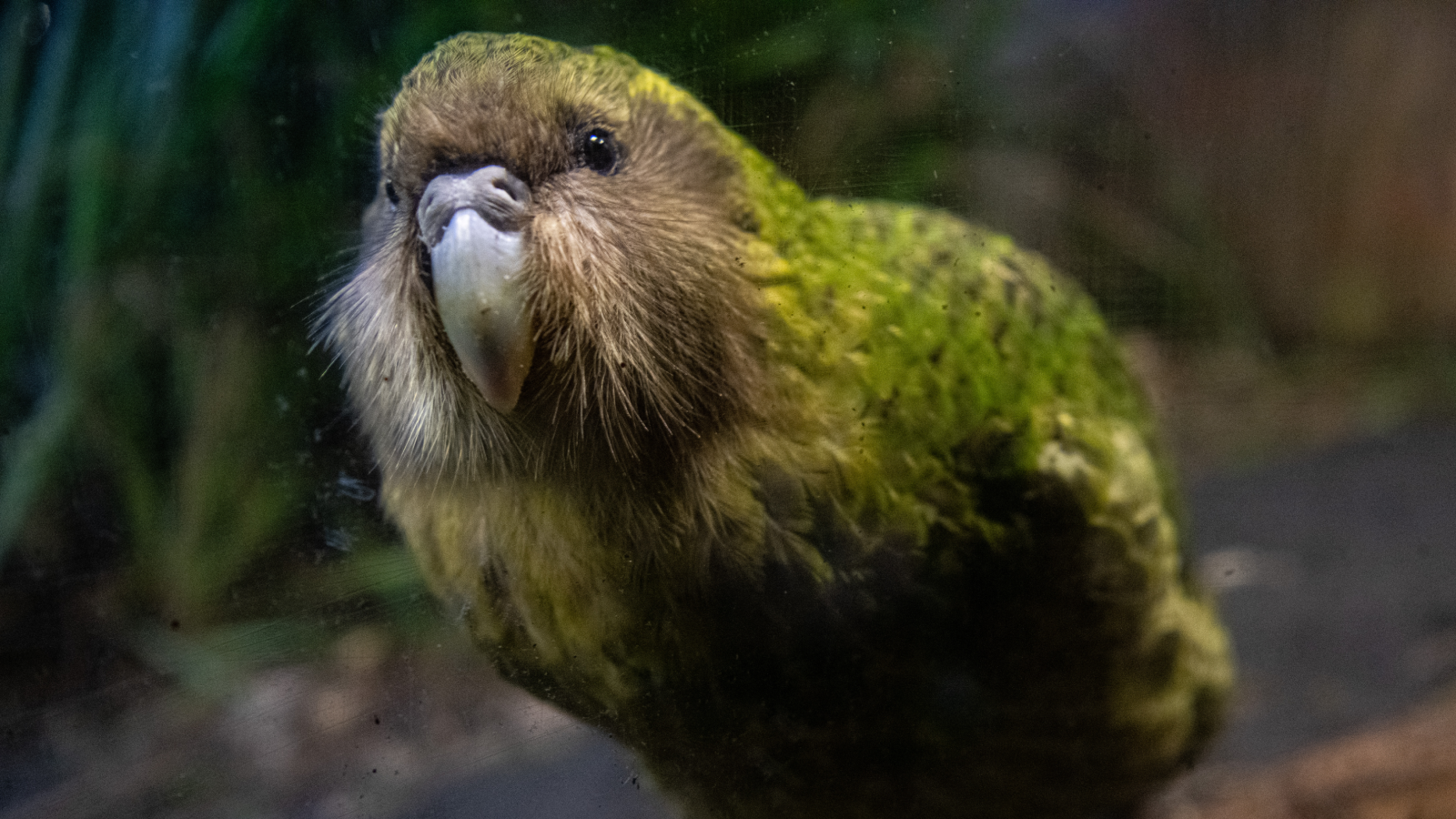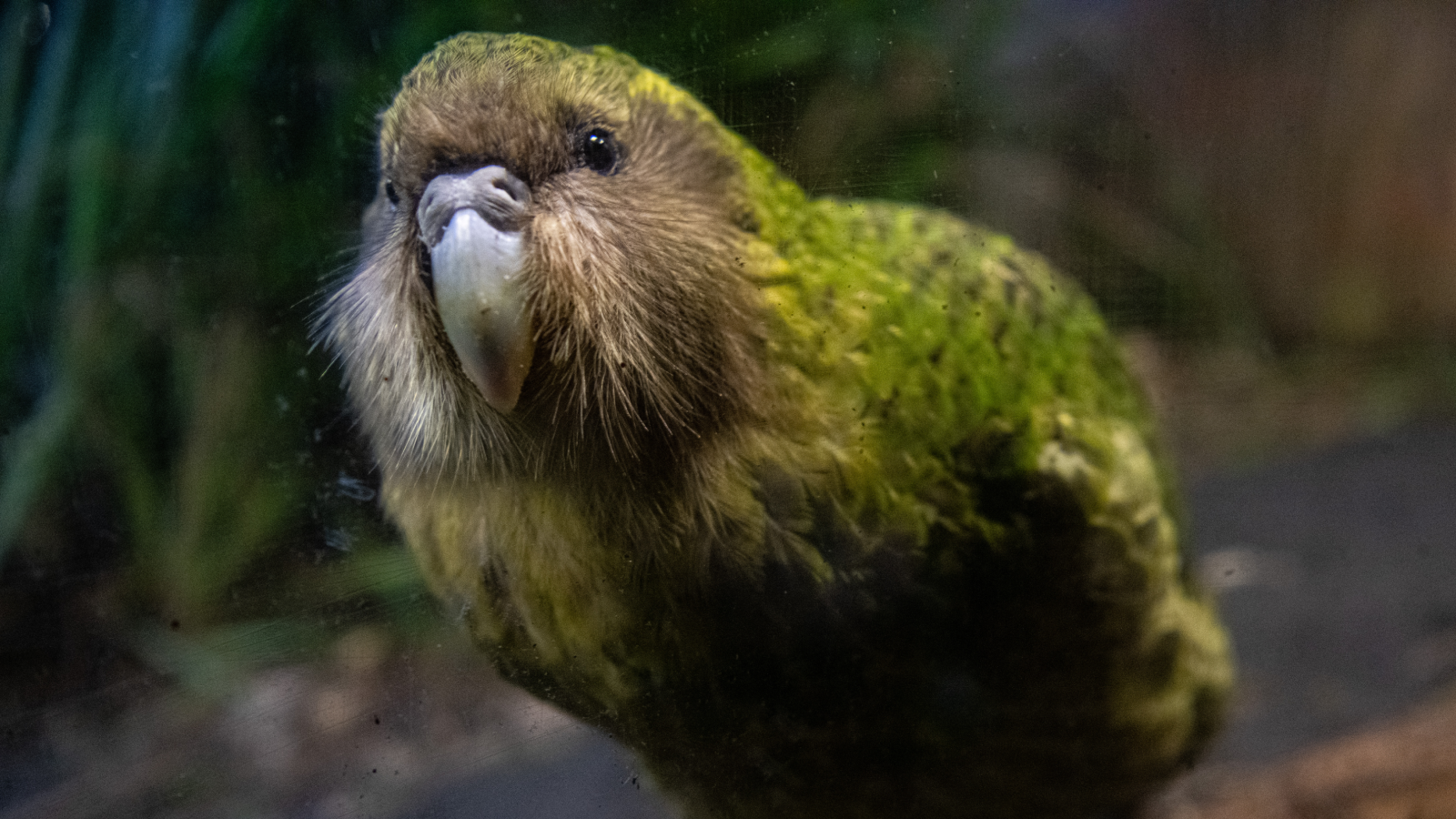Kākāpō: The chonky parrot that can live almost 100 years
Kākāpō: The chonky parrot that can live almost 100 years

Kākāpō: The chonky parrot that can live almost 100 years

The first thing that you'll notice about kākāpō — a type of large, flightless parrot found only in New Zealand — is how rotund they are.
They have endearingly round heads and bodies, owl-like faces and sturdy legs, and they are the biggest of all modern parrots; males measure up to 25 inches (64 centimeters) long and can weigh nearly 9 pounds (4 kilograms). Kākāpō are also one of the longest-lived birds in the world, estimated to reach 90 years.
The name "kākāpō" means "night parrot" in the Māori language, a reference to the birds' nocturnal habits. Though kākāpō cannot fly, they can walk for long distances and are agile climbers, clambering and leaping from trees using their shortened wings for balance.
And only just, given the massacre by rats and cats and possums. The few remaining kakapo are all confined to islands off the mainline and watched over individually. This species is above all a major conservation test case.
See the last 10 minutes of episode 1 of Attenborough's Life of Birds (it's been shared online) for a great introduction.